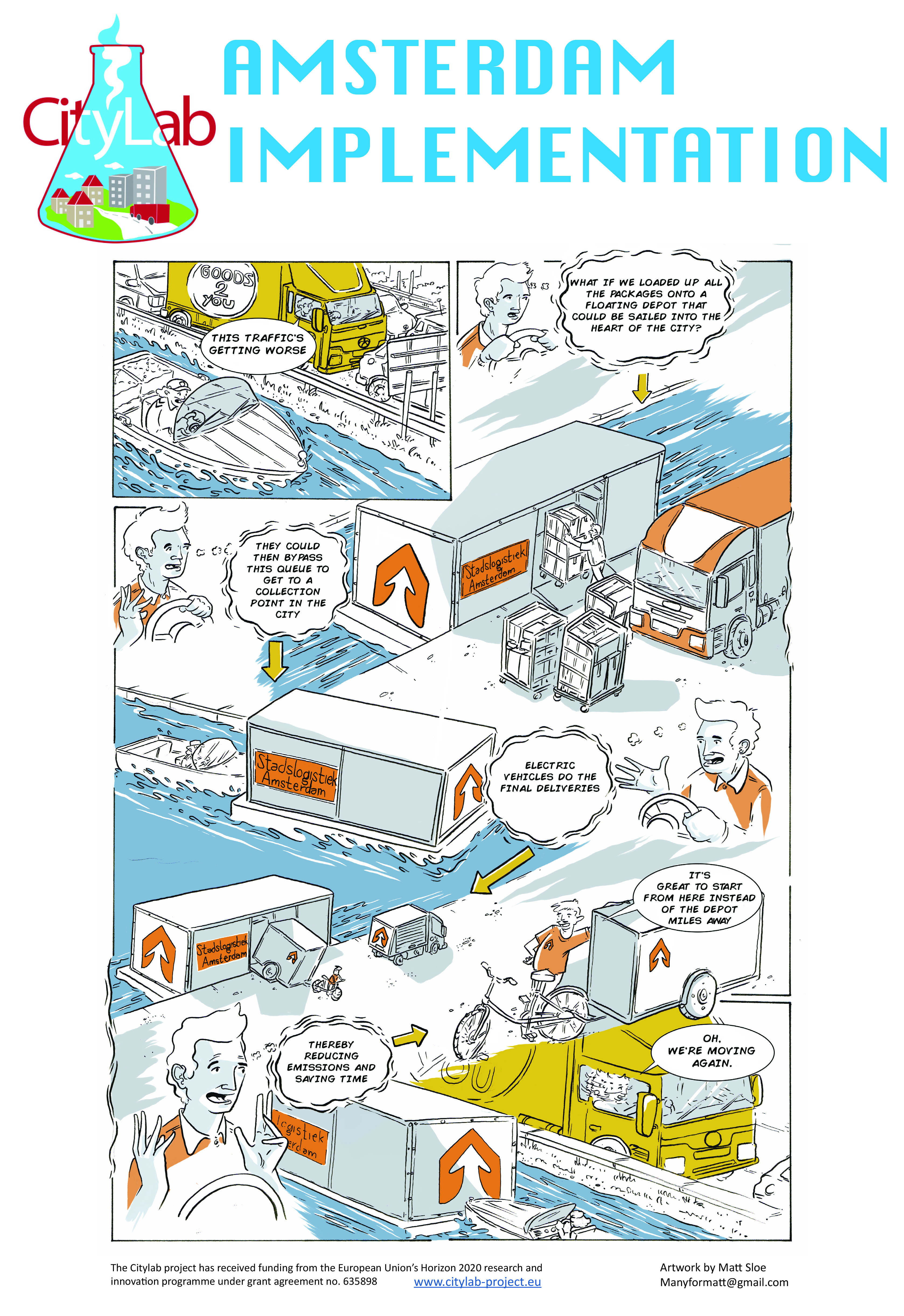
Project News
Consolidation Centres Can Improve Air Quality in Towns and Cities 17/7/18
Project formally ends (30/4/18)
Final conference reported in Newsletter #6 30/4/18
Transferability leaflet 30/4/18
Observatory brochure updated 19/4/18
Living lab handbook 18/4/18
Final conference, 23/24 April, Brussels
Oslo video 5/4/18
Poste Italiane video 27/3/18
Future Public Sector Logistics Consolidation 23/2/18
Mobility is a Serious Game! 23/1/18
Newsletter #5 issued 20/12/17
Brussels-Mobility freight video 18/12/17
Brussels-Capital SUMP award 18/12/17
Implementation posters 8/11/17
Citylab event in Rome 20/10/17
METRANS UF Conference presentations 17/10/17
Citylab at the Civitas Forum 27/9/17
Living lab updates 27/9/17
CiTTi conference article 13/10/17
Living lab animation 25/9/17
Instant deliveries presentation 30/8/17
Consolidation and EV presentation 22/6/17
Newsletter #4 issued 31/5/17
Freight observatory findings 17/5/17
Right on time! presentation 9/4/17
Freight in the City presentations 1/3/17
Implementation dashboards now live 28/2/17
European Review of Regional Logistics (including feature on Citylab) 20/12/16
| Motivation and concept | |
|---|---|
| The plan at the start of the project was to use Amsterdam’s waterways to increase efficiency and sustainability of PostNL’s freight operations by avoiding congested city centre roads. The idea was to develop and use a floating depot pushed by a hybrid push boat from where electric vehicles or bicycles would deliver goods over the last mile (as illustrated); however this proved to be too expensive to go ahead due to staffing, lifting equipment and other costs. | |
 |
|
| Implementation status and next steps | |
| The concept has since developed to become a microhub concept with last mile delivery using electrically-assisted bicycles and stints (segways).
The freight e-bikes have been in use since 2017 and seven shared micro-hubs have been opened which were already being used (e.g. as a post office or for mail delivery).
Each micro-hub is supplied by a truck twice a day. The first trip includes mail that will be delivered to business clients in the morning.
Once the e-bikes deliver all mail to the clients, they return to the micro-hub and are recharged. In the afternoon, the second shift empties all public mailboxes and makes collections from business clients. In the evening, a truck brings all mail from the micro-hubs to the larger depots outside the city centre. The e-bikes handle about 2200 orders each day while vans now handle only 1300 orders each day.
The most interesting statistic is that bikes are more productive than vans in terms of orders per hour. The average speed is similar in the city centre but bikes do not require parking spots which saves a lot of time. The bike routes are also shorter than van routes due to good cycling infrastructure (e.g. cycle paths). Extending the operation to other cities is the main next step. The main challenge in Amsterdam is to find sufficient employees to deliver by freight bike. Another challenge is to increase the utilization of the freight bikes by extending the operations towards the delivery of packages, food, local products and evening deliveries while maintaining sufficient time to charge the bikes. Further details: City deliveries using micro-hubs and innovative freight bikes, 8th March 2018, Amsterdam |
|
Last update: 16 March 2018 | |
| Cartoon illustrating the original concept | |

Cartoon produced by: Matt Sloe Link to full-size cartoon